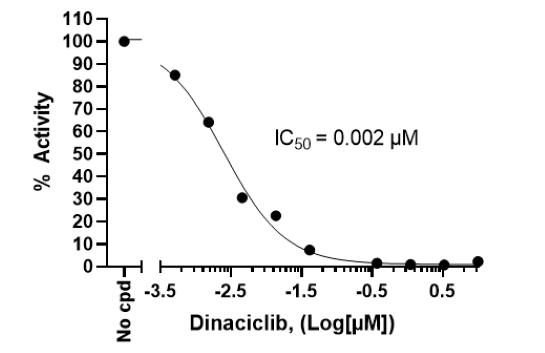Chemi-Verse™ CDK9/CyclinK Kinase Assay Kit
The Chemi-Verse™ CDK9/CyclinK Kinase Assay Kit is designed to measure CDK9 (cyclin dependent kinase 9)/Cyclin K kinase activity for screening and profiling applications using ADP-Glo™ as a detection reagent. The assay kit comes in a convenient 96-well format, with enough purified recombinant CDK9/CyclinK complex, kinase substrate, ATP, and kinase assay buffer for 100 enzyme reactions.
- ADP-Glo™ Kinase Assay (Promega #V6930)
- DTT (Dithiothreitol), 1M, optional
- Microplate reader capable of reading luminescence
- Adjustable micropipettor and sterile tips
- 30°C incubator
Cyclin-dependent kinase 9 (CDK9) is the catalytic subunit of the positive transcription elongation factor b (P-TEFb) complex, which phosphorylates the C-terminal domain of RNA polymerase II, a key player in the production of mature RNA. P-TEFb also includes cyclinT or cyclinK. CDK9 translocates to the nucleus once it gets autophosphorylated, where it can associate with cyclinT or K. Hyperactivation of cyclins is known to result in cancer and the development of resistance to therapy, and CDK9-cyclinK is involved in genome integrity. Lack of CDK9 or cyclinK was shown to impair cell recovery after cells were stressed and potentiated DNA damage. Further understanding of the role of CKD9/cyclinK in health and disease and how to modulate it may prove beneficial for fields such as cancer therapy.
Napolitano G, et al., 2003 J Cell Physiol. 197(1):1-7.
Yu D. and Cortez D., 2011 Cell Cycle 10(1):28-32.
Li J., et al., 2022 J Med Chem. 65(16):11034-11057.


